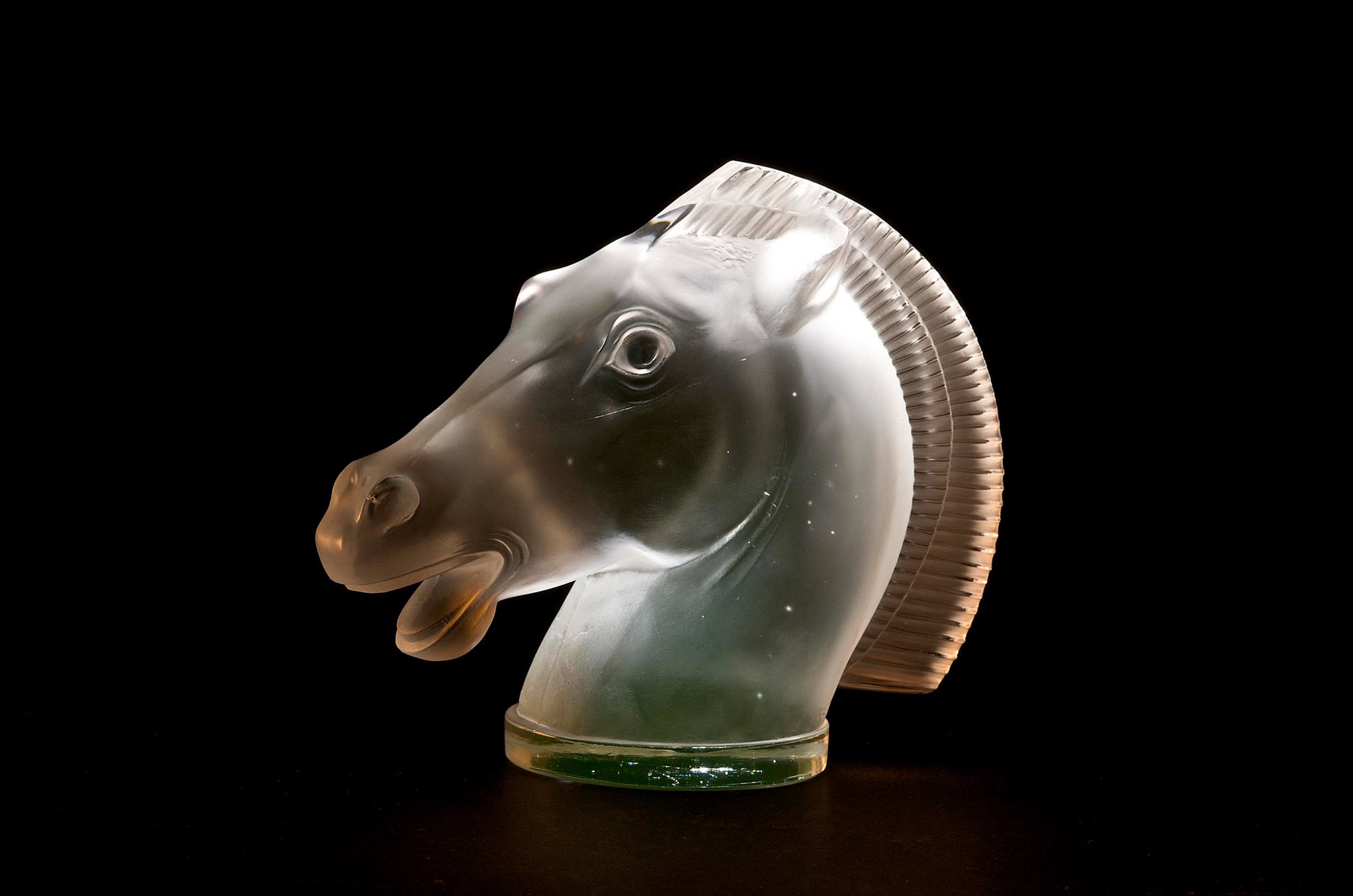Model No: 1152 A Longchamp. Created June 1929
Symbol of the Greek and more particularly Athenian aristocracy, the horse is often represented in art and sculpture. It appears on the friezes of the Parthenon and decorates the Metopes of the Temple of Zeus at Olympia.
René LALIQUE was inspired by this to create, in 1929, two horse head designs dedicated to the two most elegant races and tracks of the time, “The Epsom Derby" of Surrey in England and "Longchamp", name of the racetrack in Paris running the coveted "Prix de l'Arc de Triomphe”.
René LALIQUE created another Longchamp mascot with a single mane, which was to become the definitive version of this model under the same model number, just 3 months later. Thus, this double mane ‘A’ version is quite rare these days.
The Longchamp in this version was also commissioned from René LALIQUE by Emperor Hirohito.
This first version clearly evolved from Epsom but looks to be kept in check, in contrast to the speeding and straining Epsom which was introduced one week earlier. Both still evoke an expression of movement whether forward or backward.
Length: 15cm
Clear (white) glass press molded
Price (1932 Lalique et Cie Catalogue): not listed, replaced by 1152 Longchamp (B version definitive)
Breves of Knightsbridge, London UK did not list this model in their Car Mascots leaflets or material along with the Longchamp B and Epsom horse head designs (though Epsom did appear in some later sales listings as ’Troy’). No reason is known other than to speculate it was related to the difficulties in mounting these designs to the Breves mount (a groove had to be cut in Longchamp A and Epsom) and also the economic climate and fading fashion for car mascots. Though you might have expected this subject matter to be especially popular in both the UK and France.
Other names for this mascot - Longchamps, Longchamp, Longchamp A, Horse Head Double Mane, Longchamp Double Mane. Mascotte, Hood Ornament, Car Mascot, Bouchon de Radiateur, Radiator Cap.
The double mane Longchamp was also available as a pair of bookends (serre-livres) but date of introduction and removal from catalogues are not clear, it was likely using up stock after withdrawal of the piece as a car mascot.
No known reissue in crystal post 1947, not marketed today.

